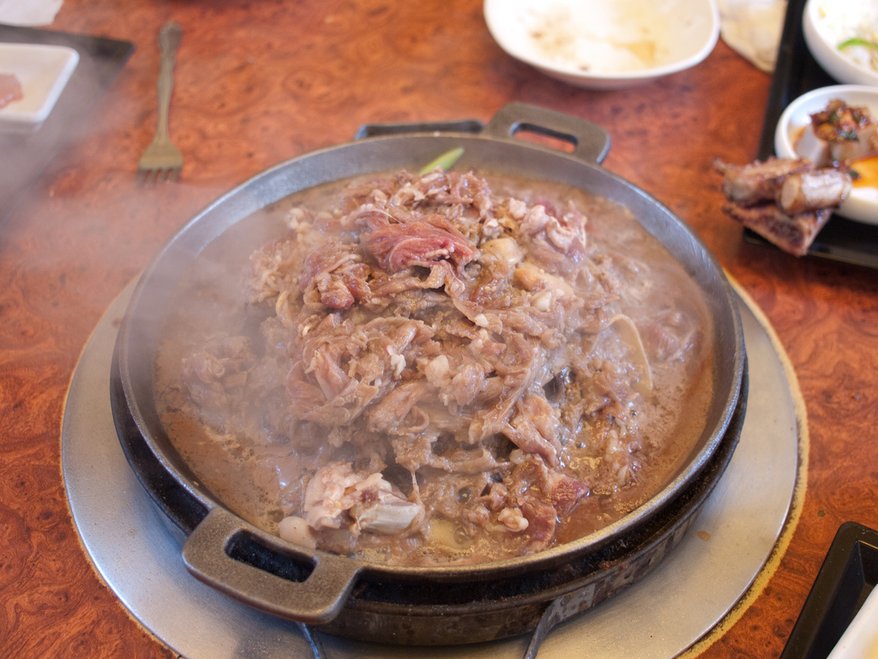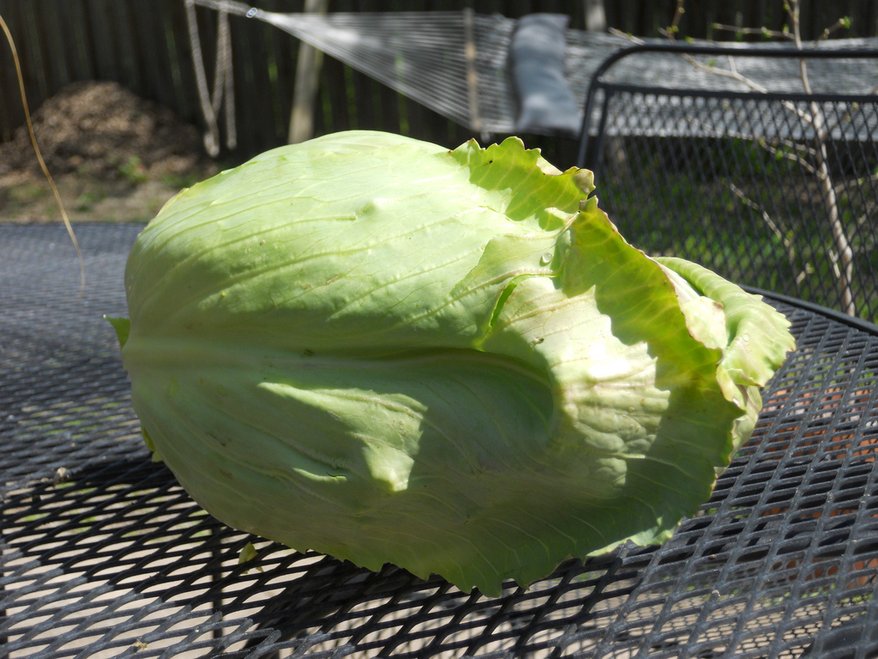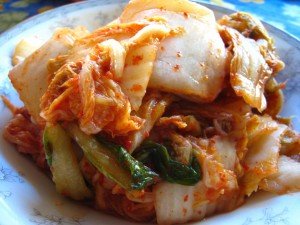Korea Day: Eat like a champion

If you want to play like a champion, you need to eat like a champion. That's why we've turned to our ever-loyal, longtime Korean ally and former intern Andy Salisbury to share his generations-old Korean cooking secrets with us. These are family recipes refined by his great-grandmother and passed down from generation to generation since then. If there's a more authentic way to learn the secrets of the food that fuels the most advanced StarCraft-playing civilization, I haven't heard of it. So read on, grab a shovel and get ready to bury some cabbage in your backyard!
Malgun Miok Kuk (Clear Seaweed Soup)
Ingredients:
- 1 cup of cut seaweed
- 4 cups of water
- 1/2 pound of beef
- 1 tablespoon of soy sauce
- 1 scallion
The biggest gaming news, reviews and hardware deals
Keep up to date with the most important stories and the best deals, as picked by the PC Gamer team.
- 1 tablespoon of salt
- 1 clove of garlic
To prepare:
Soak the dried seaweed in warm water for 30 minutes, then rise and wash carefully. Cut the seaweed into 2-inch lengths, shred beef into 2-inch lengths and crush the garlic.
Bring the water to a boil, and add the beef. Remove any froth from the top, and add the seaweed, scallion, garlic, soy sauce and salt. Lower the heat and let it simmer for 10 minutes before serving.

Image courtesy of Jon Roberts
Kim Chee (Spicy Pickled Cabbage)
Ingredients:
- 3-4 pounds of nappa cabbage, sliced into 1 1/2-inch pieces (in the summertime my great grandmother would use cucumbers)
- 1/3 cup of salt
- 1 cup of daikon, julienned
- 1/2 cup of carrots and/or green onion (optional, my great grandmother would put in for color mostly)
- 1-3 tablespoons of red pepper powder, mixed with 1-3 tablespoons of hot water (depending on how spicy you like it)
- 1 tablespoon of paprika
- 3 cloves of garlic, minced
- 2 tablespoons of ginger, minced
- 1 tablespoon of sugar
- 1 tablespoon of patis (a type of fish sauce)
To prepare:
Place the sliced nappa cabbage in a large bowl or sink and sprinkle it with the salt. Place a plate over the nappa and weigh it down with heavy rocks, bricks, or can. Then let it sit overnight. The next day rinse the salted nappa and squeeze out as much water as possible. Use your hands to mix the remaining ingredients into the salted nappa. Allow this new mixture to sit overnight while weighed down once more. Pack the seasoned nappa into jars and let it ferment in a refrigerator (or, if you're feeling authentic, bury it underground like the Koreans did before refrigerators were invented). It must be cool, and it must sit overnight at a minimum. Best if left alone for a week.

Image courtesy of John Joh

